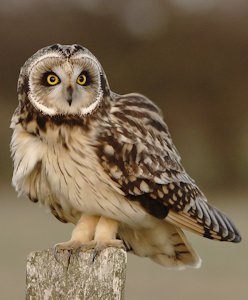
|
Bird Broods Though the number of eggs in a clutch varies widely among species, each species seems to follow one or two laying patterns. Determinate layers almost always lay the same number of eggs per clutch. For some birds with long lifespans the full clutch is only a single egg. Most shorebirds never lay more than four eggs, and seldom lay three. Many songbirds are also determinate layers, usually with clutches of three to six eggs. Other species are indeterminate layers, capable of laying more eggs if they lose any of their eggs, until a full set (a number typical of each species) is in the clutch. Experiments show that when eggs are removed from the nest before the full clutch is present, the bird will keep replacing them. A Northern Flicker once laid 71 eggs in 73 days when this trick was repeatedly played on it. This behavior has been selectively encouraged in domestic chickens for several centuries. Another clutch size pattern has been exhibited by species such as Snowy and Short-Eared Owls. These birds nest only when densities of their prey, mainly mice and lemmings, are high enough to feed their young, and they lay larger clutches --- up to 10 or 12 eggs -- when prey densities are very high. In this way they invest in large clutches only when there is enough food to support a large number of hungry chicks. Return to Bird Nesting Choices |
| Short-eared Owl |